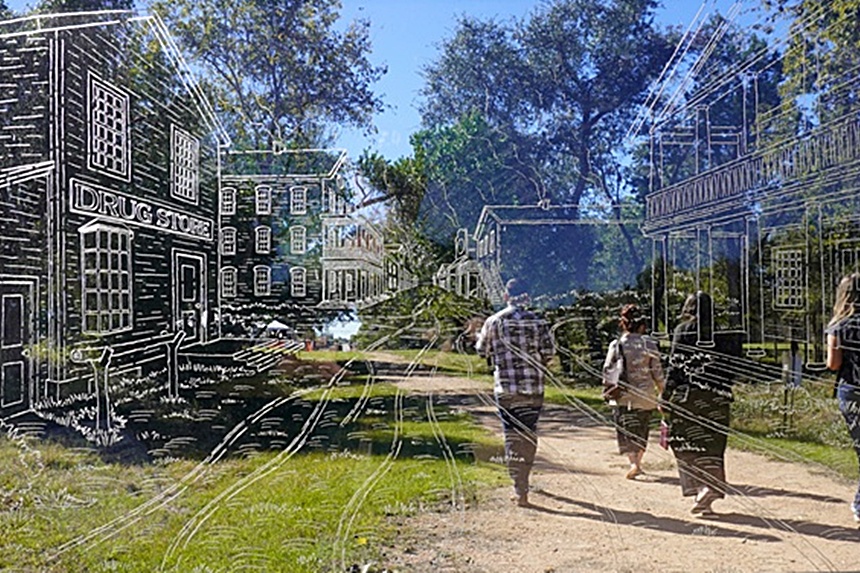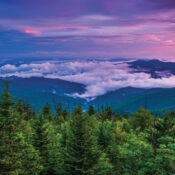If it’s a ghost town you’re looking for, there’s none in America more haunted than Texas’s Washington-on-the-Brazos, where even the buildings are ghosts.
When Texans talk about The Revolution, there’s an even chance they’re not referring to the spat that involved George Washington and Thomas Jefferson in 1776, but instead the one headlined by Sam Houston and Stephen Austin in 1836.
For nearly 190 years, the eyes of Texas have seldom gazed much farther back than the Texas Revolution.
From the time they are children, Texans are immersed in the lore of Texas’s independence with the fervor of true believers, and any pilgrimage to the lonely locale of the state’s birthplace usually first involves a stop in the nearby town of Brenham.
Points of interest in this article (Created with Google My Maps)
Brenham, historically a crossroads ranch town between Austin and Dallas, is today a center of cool casual dining, a highly regarded college, and the Blue Bell ice cream factory. The city also likes to declare itself “Where Texas Became Texas,” and that’s mostly true. Certainly, it is the closest incorporated entity to the now-abandoned, eerily empty site of an event every Texas schoolchild knows, but few outsiders have given any thought to: The signing of Texas’s Declaration of Independence.
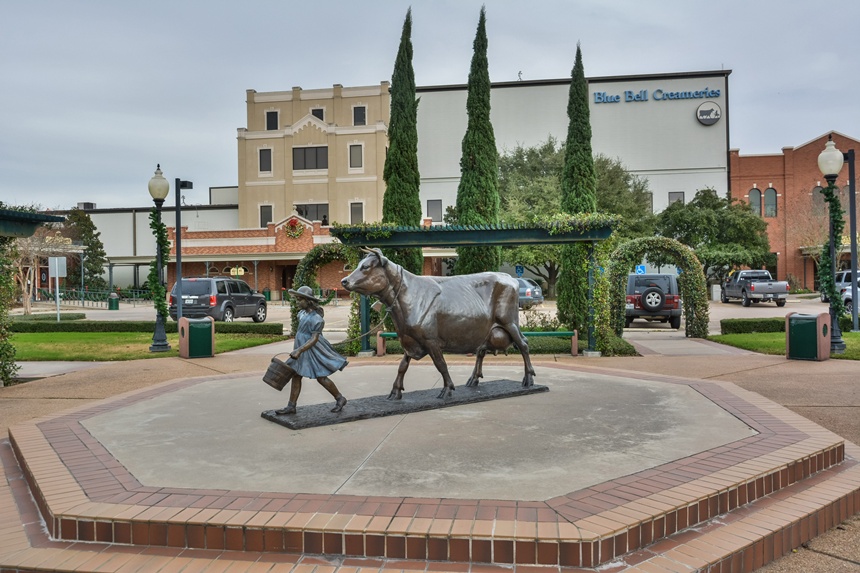
Washington-on-the-Brazos — so named to differentiate it from that eastern burg Washington-on-the-Potomac (aka Washington, D.C.) — is a true 300-acre ghost town. Even those celebrated old mining settlements that dot the West — their clapboard storefronts baking in the sun; tumbleweeds rolling along their deserted dirt streets — are proffered the dignity of a physical remnant, however ragged. The fate of Washington-on-the-Brazos is reminiscent of Carthage after the conquering Roman general Aemilianus plowed over the buildings and covered the land with salt: The only way to know there was once a city here — the capital city of an emerging nation, no less — is to take people’s word for it.
I am walking along what was, in the mid-1800s, Washington-on-the-Brazos’s main drag, Ferry Street. At least, that’s what I am assured by Tynan Shadle, the Texas Historical Commission’s lead interpreter at the site. Were he not guiding me, I’d assume I was simply tracing the meandering path of a wide wooded lane. Ferry Street was once lined with drug stores, saloons, hotels, gambling halls, and brothels. Its margins are now defined by some large scattered trees. On the road’s west side, the land slopes steeply away, eroded by 160 years of nature and neglect, forming a brush-choked ravine leading to the Brazos River, a few thousand feet to the north. On a low hill just to the east stands the brick remains of a 19th century cistern, the only remnant of a long-gone hotel where legislators once stayed while in town to discuss matters of Texas national import.
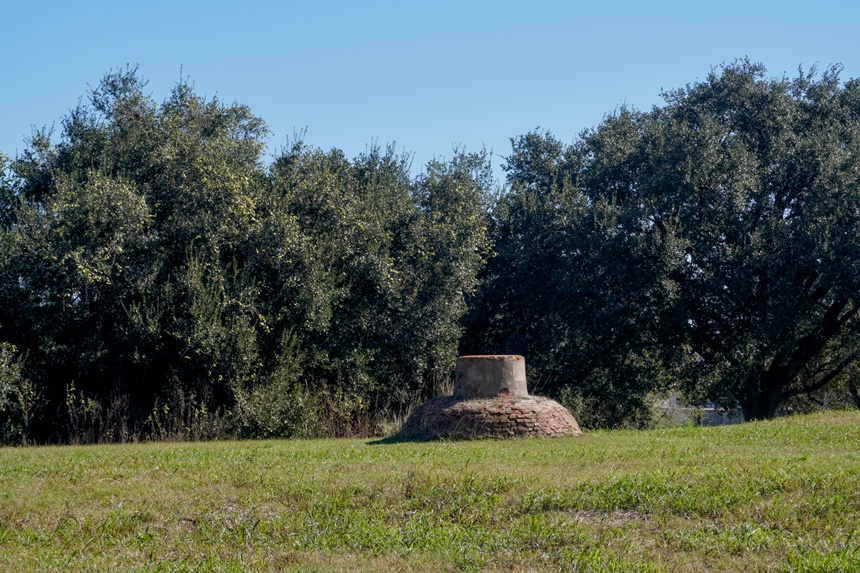
I’m finding it difficult to imagine any bustling here aside from the scurry of fox squirrels.
“Here, maybe this will help,” says Shadle, guiding me to a freestanding window pane nearby. Etched into the window is a scene of Washington-on-the-Brazos in its heyday: Ferry Street flanked by a two-story drug store, three-story boarding houses, hitching posts, and other buildings retreating into the distance. If I align my eyes with the etching and real-life landscape just right, I get an uncanny sense of just how extensive Texas’s first capital once was.
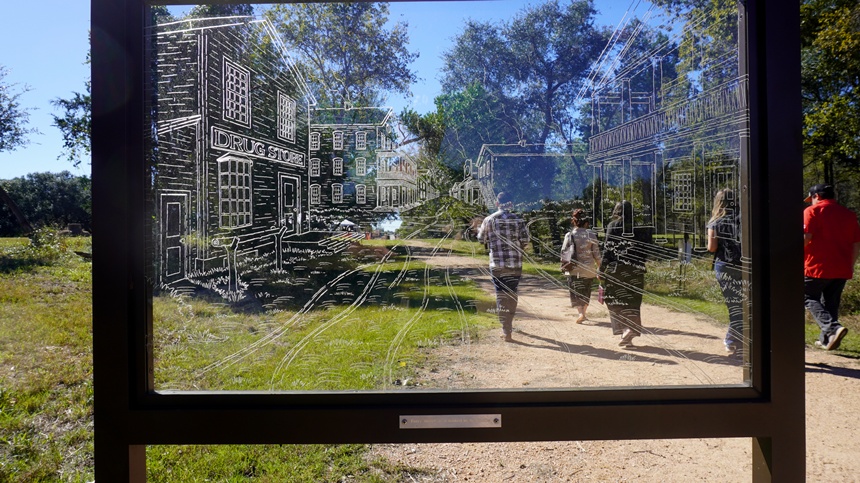
I pull back and turn to Shadle.
“What happened?” I ask.
It’s a long story.
If you stand in the middle of Ferry Street and face south, two features are immediately apparent: One is the reconstructed Independence Hall, a plain, single-room wood building occupying the space where, on March 2, 1836, 60 delegates — 57 of whom had moved to Texas from the United States — signed the Texas Declaration of Independence, severing ties with Mexico and creating the Republic of Texas.
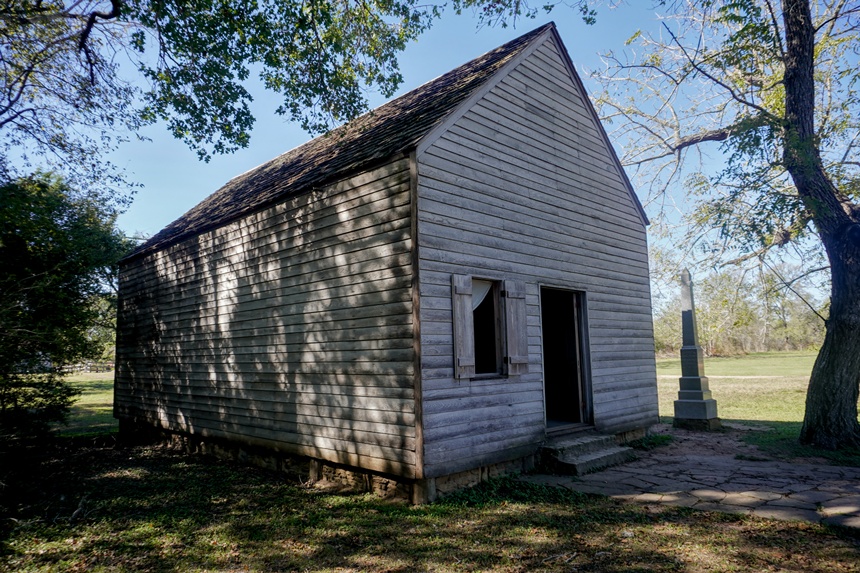
For decades, Texans had been more or less content with their inclusion as a state of Mexico so long as the federal government left them largely alone. But the 1830s brought increasingly invasive policies from Mexico City, most notably high taxes, the abolition of slavery and — ironically, through a 21st century lens — growing restrictions on immigration into Mexico from the United States. Those issues, plus the dictatorial streak displayed by Mexican President Antonio de Padua María Severino López de Santa Anna y Pérez de Lebrón (“General Santa Anna” to you) chafed at the Texans’ sense of, as Cole Porter (of all people) would write a century later: “Don’t fence me in.”
By mid-December of 1835, a ragtag coalition of Texan militia men had driven Santa Anna’s meager forces back across the Rio Grande, slapped the dust off their hands and said, in effect, “That oughta just about do it. Let’s go barbecue something.” In the newly minted capital of Washington-on-the-Brazos, that emboldened committee signed the Declaration of Independence, a document that had a familiar ring to it, defending men’s rights to life and liberty, and, in true Texas fashion, more than once affirming citizens’ rights to bear arms.

But Santa Anna had other ideas, which brings us to the second feature of note as you face south on Ferry Street in Washington-on-the-Brazos: a stretch of paved road that begins a few feet beyond the dirt traces of Ferry Street and extends, straight as an arrow, into the landscape beyond. It was along that road, and then up to Independence Hall, that a horseman on a thundering steed arrived in early March with a copy of a desperate letter, dated February 24, 1836, from William B. Travis, commander of a little outpost known as The Alamo.
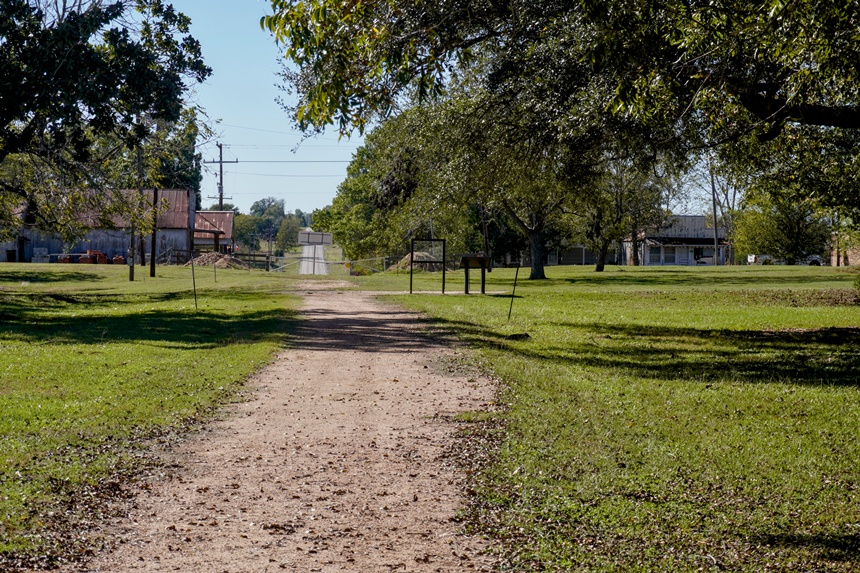
“I am besieged by a thousand or more of the Mexicans under Santa Anna,” Travis wrote, and from there, well, the news just kept getting worse. “I am determined to sustain myself as long as possible & die like a soldier…”
He signed off with a phrase that is, to this day, etched over the doors to schools across Texas, and treasured by Texans of every political stripe: “Victory or Death” (it is worth noting that “Victory or Death” is now a registered trademark of the state of Texas).
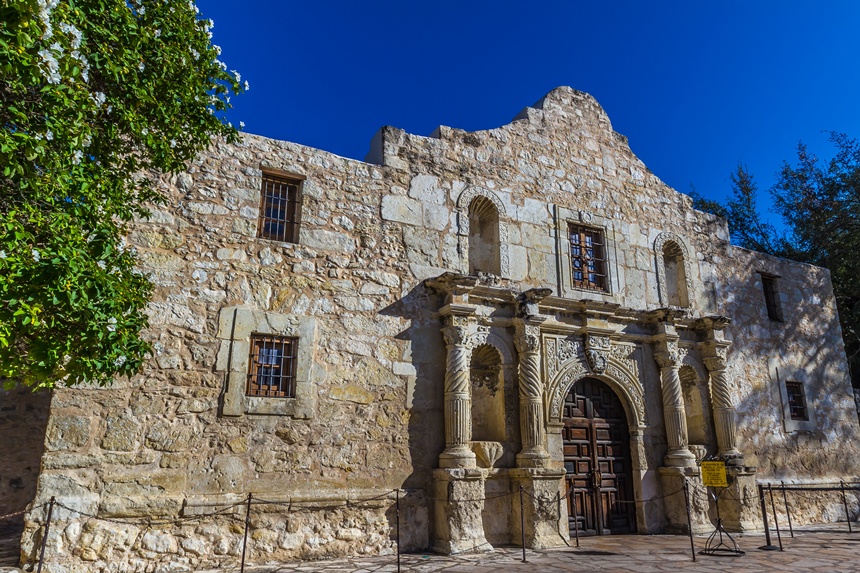
Four days after the declaration was signed, as the Texas delegation was still anticipating a peaceful transition to independence, some 200 defenders — including Travis, Jim Bowie, and Davy Crockett — lay dead at the Alamo.
The ensuing Texas War of Independence didn’t last long. From Washington-on-the-Brazos, the call went out for volunteers, and before summer, Santa Anna had been defeated at the Battle of San Jacinto, where today the world’s tallest war memorial — 15 feet taller than the Washington Monument — marks the victory that sealed Texas’s independence. Skirmishes would persist for a few years, but Texas was just too far away, and too vast, for the Mexicans to effectively press their case.

Washington-on-the-Brazos just didn’t have the critical mass to hold onto its position as the nation’s capital. Before long the government relocated, finally settling in today’s Austin — but the former capital actually thrived for a while thanks to the local cotton trade.
Emphasis on: “For a while.”
Shadle is showing me along Ferry Street which, as the name implies, terminates at the Brazos River’s edge. Here, a ferry boat provided an essential link to West Texas. Every day, steamboats pulled ashore, arriving with necessary provisions, departing with locally grown cotton, and ensuring the forever success of the town.
“Forever” ended around 1855. The death of Washington-on-the-Brazos was announced by the sound of a train whistle.
“When the railroad came this way out of Houston, the company told the people here they’d have to put up $140,000 to build a bridge across the Brazos,” says Shadle. “But the folks said, ‘We don’t need the railroad. We’ve got steamboats!”
So, the railroad went around Washington and instead put a spur line up to Brenham.
“In 10 years,” says Shadle, sweeping his hand across the graveyard that was once a national capital, “this place went from 1,500 people back down to 100. The bricks were taken to erected new buildings in Brenham.”
Fires took care of the rest.
But still, the people come. Each year, tens of thousands of Texans roam the invisible streets of Washington-on-the-Brazos and file into the nearby Star of the Republic Museum. School children pour off buses to soak in their unique nation/state history.
“This shared history is an example of how the Texas identity came into being,” says Shadle. “What happened here in 1836 is the pillar that holds the story together: Who we were and who we are today as Texans.”
On Texas Independence Day each March, when a dramatic reading of the Declaration of Independence is followed by the Annual Republic of Texas Chili Cookoff, one reveler told a reporter, “Today no one here is a Republican or a Democrat. We’re just Texans.
“And I like the feel of that.”
At a shady corner outside the reconstructed Independence Hall stands a small obelisk, erected in 1900 by a group of schoolchildren who feared Texans would forget that their state was once something quite different from places like Arizona and (heaven forbid) New Hampshire.
“Here,” the inscription reads, “a Nation Was Born.”
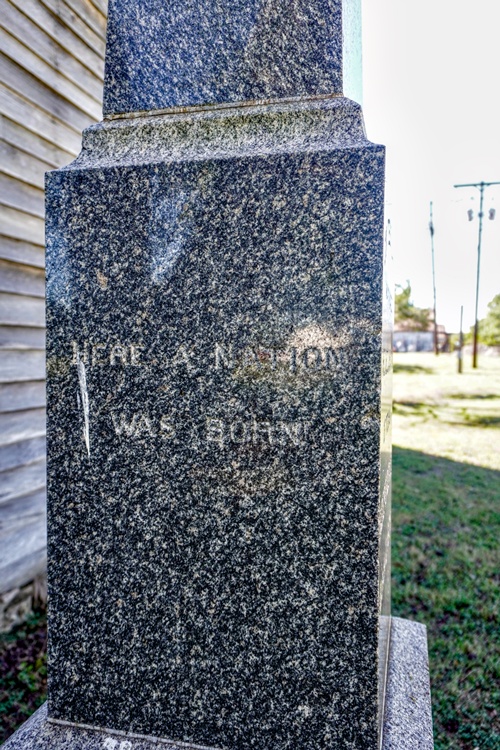
“They were afraid the state would forget that they were once a country,” says Shadle. He shakes his head.
“That probably wasn’t likely.”
Become a Saturday Evening Post member and enjoy unlimited access. Subscribe now
